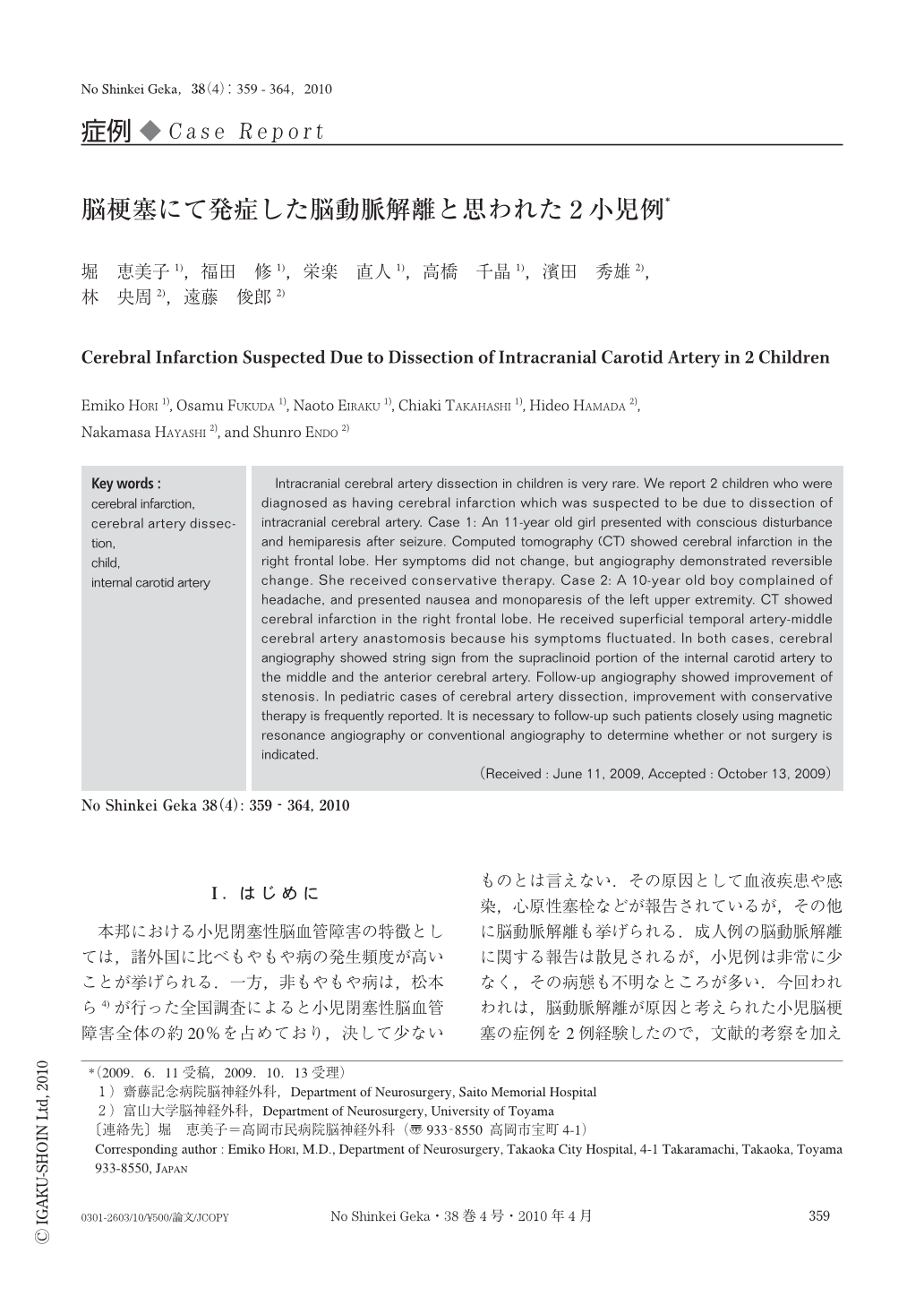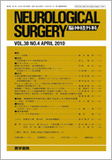Japanese
English
- 有料閲覧
- Abstract 文献概要
- 1ページ目 Look Inside
- 参考文献 Reference
Ⅰ.はじめに
本邦における小児閉塞性脳血管障害の特徴としては,諸外国に比べもやもや病の発生頻度が高いことが挙げられる.一方,非もやもや病は,松本ら4)が行った全国調査によると小児閉塞性脳血管障害全体の約20%を占めており,決して少ないものとは言えない.その原因として血液疾患や感染,心原性塞栓などが報告されているが,その他に脳動脈解離も挙げられる.成人例の脳動脈解離に関する報告は散見されるが,小児例は非常に少なく,その病態も不明なところが多い.今回われわれは,脳動脈解離が原因と考えられた小児脳梗塞の症例を2例経験したので,文献的考察を加え報告する.
Intracranial cerebral artery dissection in children is very rare. We report 2 children who were diagnosed as having cerebral infarction which was suspected to be due to dissection of intracranial cerebral artery. Case 1: An 11-year old girl presented with conscious disturbance and hemiparesis after seizure. Computed tomography (CT) showed cerebral infarction in the right frontal lobe. Her symptoms did not change,but angiography demonstrated reversible change. She received conservative therapy. Case 2: A 10-year old boy complained of headache,and presented nausea and monoparesis of the left upper extremity. CT showed cerebral infarction in the right frontal lobe. He received superficial temporal artery-middle cerebral artery anastomosis because his symptoms fluctuated. In both cases,cerebral angiography showed string sign from the supraclinoid portion of the internal carotid artery to the middle and the anterior cerebral artery. Follow-up angiography showed improvement of stenosis. In pediatric cases of cerebral artery dissection,improvement with conservative therapy is frequently reported. It is necessary to follow-up such patients closely using magnetic resonance angiography or conventional angiography to determine whether or not surgery is indicated.

Copyright © 2010, Igaku-Shoin Ltd. All rights reserved.


